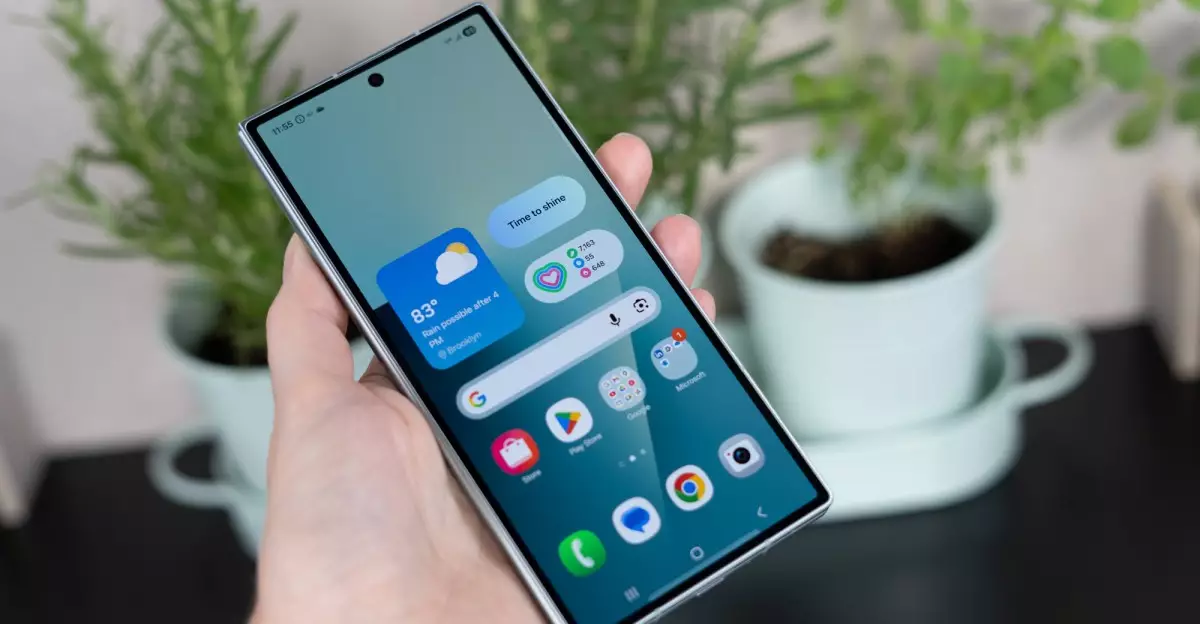Samsung has consistently set the bar high in the realm of foldable smartphones, and with the imminent release of the Galaxy Z Fold 7, expectations are soaring higher than ever. This device isn’t just an incremental upgrade; it represents a bold leap toward a more seamless and versatile mobile experience. Despite its premium price tag, the Z Fold 7’s advancements — notably its unprecedented thinness, larger external display, and refined form factor — position it as a true flagship that redefines what a smartphone can be. Far from being merely a luxury gadget, it embodies a futuristic vision for mobile technology that many users will find compelling.
Instead of a device that merely improves on its predecessor, Samsung’s latest foldable exemplifies a strategic blend of elegance, functionality, and forward-thinking design. The emphasis on making a phone thinner—just 8.9mm when folded—offers a sensation of familiarity that is rare in the foldable space. It’s a testament to Samsung’s engineering prowess: creating a device that toggles effortlessly between the productivity of a tablet and the portability of a phone. This innovation pushes the boundaries and strongly suggests that foldables are no longer future technology but a present-day reality.
Trade-In Promotions: Making the Leap More Affordable
One of the most fascinating aspects of Samsung’s Z Fold 7 launch is the aggressive trade-in deals and promotional offers aimed at softening the device’s hefty price. While the starting MSRP of $1,999 might seem prohibitive, the various trade-in and carrier incentives make the device within reach for many eager early adopters. The most significant savings come through trade-in programs, where Samsung and carriers offer hefty credits—up to $1,100—on eligible devices like last-generation Z Fold and S-series phones. This effectively slashes the retail price by over half, bringing the cost down to a more palatable $999 for tech enthusiasts unwilling to wait.
The landscape of trade-in deals varies depending on the purchasing channel. Samsung’s online store offers instant credit — smoothly reducing the out-of-pocket expenditure—and even throws in a $50 accessory credit. Carrier promotions, however, take a different approach, providing monthly credits over 36 months, which can be particularly enticing for those on long-term plans. AT&T and Verizon’s offers include substantial monthly credits, with some requiring eligibility on specific plans and the condition of the trade-in device. For consumers comfortable with installment plans, these options practically make the Z Fold 7 a fabric of their monthly budget.
What’s particularly notable here is the strategic push to persuade consumers that the foldable experience is worth the initial investment. The trade-in schemes succeed because they make the device feel less like a luxury and more like a practical evolution that pays off over time. Moreover, the added credit for accessories, especially when preordering directly from Samsung, encourages bundle purchases and enhances the overall value proposition.
Availability, Storage Options, and Purchase Dynamics
As the launch date of July 25 approaches, the market is witnessing a dynamic interplay of offers from Samsung, retailers, and carriers. Retailers like Amazon and Best Buy provide compelling deals, including no-cost upgrades to the 512GB variant or bundled gift cards, which sweeten the initial purchase. By contrast, some carriers are offering the same base price for the smaller model— a move that might seem inconsistent but ultimately emphasizes the premium nature of the device.
An intriguing aspect is the storage options and how they are being positioned for different market segments. The 512GB model, which generally commands a premium, is sometimes offered at no extra cost or at a discounted rate—especially through select retailers—making it an attractive option for users who need ample space for apps, media, and productivity tools. This strategy not only incentivizes quick buying decisions but also signals Samsung’s confidence in the device’s appeal across varied user profiles.
Choosing where to purchase isn’t merely about price but about the bundled benefits—like gift cards, accessory credits, or the specific trade-in conditions. For instance, buying via Samsung’s official website offers the added comfort of instant trade-in credits and exclusive accessory discounts, whereas retail giants might provide attractive bundles to lure attention. The decision ultimately hinges on the user’s priorities—whether it’s maximizing savings, securing better storage, or unlocking exclusive perks.
Is the Investment Justified? A Personal Perspective
Given the significant investment required, it’s natural for consumers to scrutinize whether the Galaxy Z Fold 7 truly warrants the hype and high price. Personally, I believe that Samsung’s foldable road map has matured enough to justify the premium, particularly for those who want a device that combines portability with tablet-like versatility. The refined design, especially its ultra-thin profile, makes it a tangible leap toward a future where the phone adapts seamlessly to all aspects of life.
However, I remain skeptical about whether this device appeals to the average consumer or if it’s predominantly for early adopters, tech enthusiasts, or professionals who can justify the cost through productivity gains. The upgrades, while meaningful, aren’t revolutionary enough to be deemed essential — yet they demonstrate Samsung’s commitment to refining the foldable form factor, hinting that this technology is becoming more mainstream.
Ultimately, whether the Z Fold 7 is a worthwhile investment depends on one’s appetite for cutting-edge tech and willingness to engage with the foldable format. For those who value innovation and the complement of advanced features like a larger exterior screen and a thinner design, this device is undoubtedly a flagship that pushes boundaries. Yet, it’s critical to weigh these benefits against the steep financial commitment and the evolving landscape of foldable devices.
While frustration with the high launch price persists, the array of promotional deals, trade-in upgrades, and retail discounts creates a compelling case: yes, it’s a hefty expense, but for the right user, it’s an investment in the future of mobile computing.

